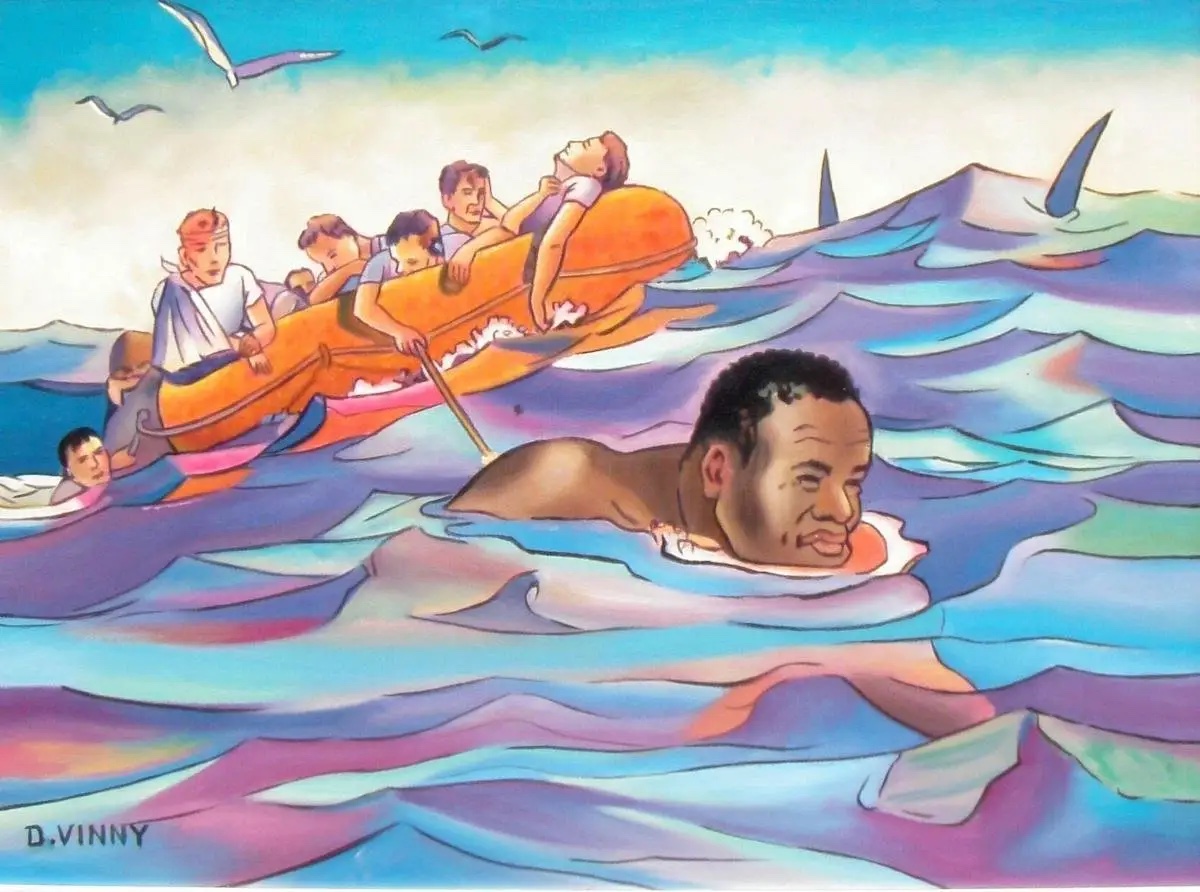“Just tell me if I’m going the right way.”
Charles Jackson French called the words out to a raft of 15 injured sailors as he tied a rope around his waist and began to swim. He did so for nearly eight hours, swimming his way through shark-infested waters and into U.S. Navy history.
On January 10, Secretary of the Navy Carlos Del Toro announced that the sea service will name a new Arleigh Burke-class destroyer after French in honor of his heroic actions that day during the September 1942 naval battle near Guadalcanal.
French, a Black cook who had previously completed a four-year enlistment in the Navy, reenlisted just days after the Dec. 7, 1941 attack at Pearl Harbor. By Sept. 4, 1942, French found himself aboard the destroyer-turned-transport ship USS Gregory as it returned from delivering a Marine Raider battalion to Savo Island.
As Gregory and her sister ship USS Little patrolled the area between Savo Island and Guadalcanal, “three Japanese destroyers — Yūdachi, Hatsuyuki and Murakumo — came into the Slot undetected to bombard American positions ashore,” according to Naval History and Heritage Command.
Gunfire erupted, with flashes lighting up the night sky in the early morning hours of Sept. 5. From the sky, a patrolling Navy pilot believing the flashes to be coming from Japanese submarines dropped a line of five flares in the water.
Gregory and Little were suddenly illuminated, silhouetting as easy targets for Japanese destroyers.
With the destroyers previously stripped of virtually all their armament to make room for boats, the outgunned Gregory lasted just three minutes before her boilers burst and calls to abandon ship rang out.
Mess Attendant 1st Class French was among the very few left uninjured by the ship’s conflagrations. Despite standing at just 5′8 and 195 pounds, French was a strong swimmer and calmly swam around the sinking ship gathering his injured comrades.
Ensign Robert Adrian, who gradually came to after suffering injuries to his legs and blast fragments in his eyes, attempted to persuade French to join them aboard the raft and out of the shark-infested waters, Adrian later recalled.
French refused, responding that he was more afraid of the Japanese than the sharks. Against a strong current, French swam all night — away from enemy gunfire and the Japanese-held shoreline.
In eight hours he managed to rescue all but 11 members of Gregory’s crew, according to Naval History and Heritage Command. At sunrise, French and the raft of sailors were spotted by scout aircraft.
For his actions, French was recommended for the Navy Cross. However, likely due to his race, the cook only received a letter of commendation from Adm. William “Bull” Halsey, the commander of the Southern Pacific Fleet.
In the letter, Halsey mistakenly credited French with swimming continuously for only two hours.
Initially, French’s story was covered widely, particularly in Black newspapers in the U.S. He was dubbed the “Human Tugboat” and was featured in one comic book iteration.
Adrian, meanwhile, appeared on a national radio show to tell French’s story after becoming outraged over the minimal accolades garnered by the sailor’s heroics.
After the war, however, French’s story was largely forgotten. He died in 1956 of alcoholism, a condition historians say was likely brought on due to undiagnosed post-traumatic stress disorder.
In May 2022, Del Toro sought to correct the record and posthumously awarded the Navy and Marine Corps Medal to French. That year the training pool for rescue swimmers at Naval Base San Diego was named after him.
French is now getting some “long-overdue recognition,” Del Toro said on Wednesday during the Surface Navy Association’s 36th National Symposium.
“French gathered 15 shipmates onto a raft and, fearing they would drift to a Japanese-controlled island, towed the raft himself to a different island,” Del Toro continued. “He swam for hours, pulling 15 souls from the jaws of the sea, defying the odds and the sharks with nothing but his own grit and compassion.”





